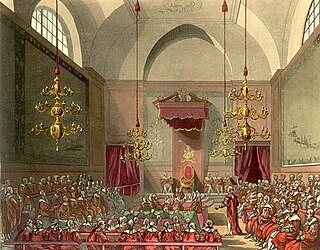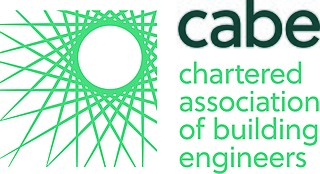Related Research Articles

A statutory instrument (SI) is the principal form in which delegated legislation is made in Great Britain.

The Architects Registration Board (ARB) is the statutory body for the registration of architects in the United Kingdom. It operates under the Architects Act 1997 as amended, a consolidating Act. It began under the Architects (Registration) Act, 1931 which gave it the name the Architects' Registration Council of the United Kingdom (ARCUK). It prescribes architectural qualifications, maintains the Register of Architects, issues a code of professional conduct and competence and imposes sanctions if a finding of unacceptable professional conduct or serious professional incompetence is made against an architect. Its main source of income is fees payable under Part II of the Act by persons on their becoming registered or for their retention on the Register. The board is required to pay into the Consolidated Fund of the United Kingdom any sum paid under a penalty order which its Professional Conduct Committee has made under Part III of the Act. Fines imposed by a magistrates' court under Part IV of the Act are not payable to the board.
His Majesty's Land Registry is a non-ministerial department of His Majesty's Government, created in 1862 to register the ownership of land and property in England and Wales. It reports to the Department for Levelling Up, Housing and Communities.

Certain governments in the United Kingdom have, for more than a century, attempted to find a way to reform the House of Lords, the upper house of the Parliament of the United Kingdom. This process was started by the Parliament Act 1911 introduced by the then Liberal Government which stated:
...whereas it is intended to substitute for the House of Lords as it at present exists a Second Chamber constituted on a popular instead of hereditary basis, but such substitution cannot be immediately brought into operation
The General Teaching Council for Scotland is a fee based registered charity and the world's first independent registration and regulation body for teaching. The current Chief Executive and Registrar is Dr Pauline Stephen. The GTC Scotland maintains a register of qualified teachers and college lecturers; there were 80,695 teachers and college lecturers on the register on 31 March 2022.

William Henry White was a British architect, as well as 18 years secretary of the Royal Institute of British Architects.

The Architects (Registration) Acts, 1931 to 1938 is the statutory citation for three Acts of the United Kingdom Parliament, namely:
The Board of Architectural Education is no longer appointed. It had been a statutory body in the United Kingdom constituted under section 5 of the Architects (Registration) Act, 1931.
For the purposes of the statutory Board of Architectural Education, the Schools of Architecture were those listed in the Second Schedule to the United Kingdom Architects (Registration) Act 1931. The 1931 Act had required the Board of Architectural Education to be appointed annually by the Architects' Registration Council of the United Kingdom (ARCUK). The Board was to be constituted in accordance with the Second Schedule to the Act. This included a list of twenty Schools, from the Liverpool School of Architecture to the School of Architecture of the Architectural Association London.
The Warne Report was published by the United Kingdom Government in 1993. It was referred to in a government consultation paper on Reform of Architects Registration dated 19 July 1994. Eventually, certain changes to the Architects Registration Acts were enacted in 1996 which now have effect under the Architects Act 1997.
Under an Act passed by the UK Parliament in 1931, there was established an Architects' Registration Council of the United Kingdom (ARCUK), referred to in the Act as "the Council". The constitution of the Council was prescribed by the First Schedule to the Act. The Act made the Council a body corporate by the name Architects' Registration Council of the United Kingdom. It was habitually referred to colloquially by the acronym ARCUK.

The Architects Act 1997 is the consolidating Act of the Parliament of the United Kingdom for the keeping and publishing of the statutory Register of Architects by the Architects Registration Board. It has the long title: An Act to consolidate the enactments relating to architects. It consolidated two Acts of the 1930s as later amended both by primary legislation and by Orders in Council implementing the EC directive on architects providing for the recognition of architects qualified in other EC states, and the changes which had been made by Part III of the Housing Grants, Construction and Regeneration Act 1996.
The Society of Architects was formed in 1834 and continued until 1925. At that time Fellows and Associates comprised two distinct classes of membership of the Royal Institute of British Architects (RIBA). They were respectively entitled to use the post-nominal affix "FRIBA" or "ARIBA". The formation of the Society of Architects was a result of a campaign by a group of associates to be allowed to vote on the affairs of the Institute which the Fellowship class had resisted.

Chartered Association of Building Engineers (CABE) is a professional body for building engineers in the United Kingdom and overseas.
From 1932 there has been a statutory Register of Architects under legislation of the United Kingdom Parliament originally enacted in 1931. The originating Act contained ancillary provisions for entering an architect’s name in the register and removing a name from it which later legislation has amended. The 1931 Act gave it the name “the Register of Registered Architects”, but by an Act of 1938 the name was changed to “the Register of Architects”.
After nearly a century of endeavour and negotiation which had been led by the Royal Institute of British Architects, a statutory Board of Architectural Education was formed under the Architects (Registration) Act, 1931. For the purposes of constituting the Board of Architectural Education the Act included a list of Schools of Architecture in the United Kingdom. The statutory Board was abolished in the 1990s, and when the Architects Act 1997 repealed the 1931 Act the statutory list of Schools of Architecture went with it.
The Architects Act was amended in 2008 by a statutory instrument made by a minister of the United Kingdom government under the European Communities Act 1972. This was the Architects Regulations 2008, which came into force on 20 June 2008. An Explanatory Memorandum was issued with the Regulations and a fuller Explanatory Memorandum presented to Parliament.
An urban planner is a professional who practices in the field of town planning, urban planning or city planning.
In the United Kingdom, the Architects Act 1997 imposes restrictions on the use of the name, style or title "architect" in connection with a business or a professional practice, and for that purpose requires a statutory Register of Architects to be maintained. The Architects Registration Board constituted under the Act is responsible for Architects Registration in the United Kingdom and is required to publish the current version of the Register annually. Every person who is entitled to be registered under the Act has the right to be entered in the Register. The Act consolidated previous enactments originating with the Architects (Registration) Act, 1931 as amended by the Architects Registration Act 1938. It applies to England, Wales, Scotland and Northern Ireland.
The Architects' Alliance of Ireland (AAoI) (Irish: Ailtirí 'Comhaontas na hÉireann) is an Irish pressure group founded in 2009. Its purpose is to lobby for a change in recent legislation in Ireland.
References
- ↑ See Copy of consultation paper
- ↑ Freeman, R. Edward (1984). Strategic Management: A stakeholder approach. Boston: Pitman. ISBN 0-273-01913-9.